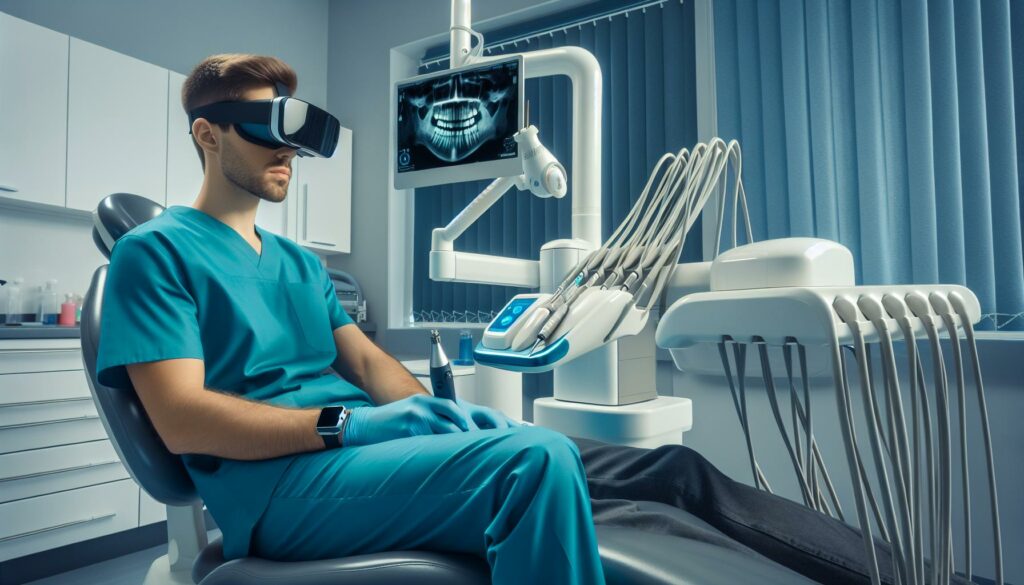I’ve witnessed automotive repair transform dramatically over the past decade. Gone are the days of purely mechanical diagnostics – today’s vehicles are essentially computers on wheels requiring sophisticated technology to diagnose and fix problems.
As a certified auto technician I’m amazed by how modern repair shops now rely on advanced diagnostic tools artificial intelligence and even augmented reality to service vehicles. From scanning systems that can pinpoint issues in seconds to predictive maintenance software that alerts drivers before problems occur the automotive repair industry has entered a new high-tech era. These innovations have made repairs more precise efficient and reliable than ever before.
Key Takeaways
- Modern hi tech auto repair now relies heavily on advanced diagnostic tools, AI systems, and digital technologies for more precise and efficient repairs
- Advanced Driver Assistance Systems (ADAS) require specialized calibration equipment and precise measurements to maintain critical safety features
- Electric vehicle servicing demands unique expertise in high-voltage systems, specialized diagnostic tools, and strict safety protocols
- Digital inspection tools like 3D measuring systems and cloud-based documentation have revolutionized vehicle diagnostics and repair documentation
- AI-powered predictive maintenance can detect potential issues weeks before they occur, with up to 95% accuracy
- Remote diagnostic capabilities enable real-time monitoring and troubleshooting, reducing diagnostic time by up to 60%
Hi Tech Auto Repair
Advanced technology integration transforms auto repair processes through data-driven diagnostics and streamlined operations. Digital solutions enhance repair accuracy and reduce vehicle downtime through precise system analysis.
Diagnostic Scanning Tools
Modern diagnostic scanners connect directly to a vehicle’s onboard computer system through the OBD-II port, providing real-time data analysis. These professional-grade tools deliver:
- Multi-system scanning capabilities for engine control units (ECU), transmission control modules (TCM) and airbag systems
- Bi-directional controls for component testing and calibration
- Code reading with manufacturer-specific definitions
- Live data streaming of up to 300 vehicle parameters
- Wireless connectivity for remote diagnostics and updates
- Digital vehicle service histories stored in secure databases
- Real-time parts inventory tracking and automated ordering
- Integration with manufacturer technical service bulletins (TSBs)
- Remote diagnostic data sharing between technicians
- Automated customer communication systems for repair updates
| Feature | Traditional Methods | Cloud-Based Solutions |
|---|---|---|
| Data Storage | Paper files | Digital databases |
| Access Speed | Minutes to hours | Instant |
| Update Time | Days to weeks | Real-time |
| Collaboration | Limited to shop | Global network |
| Cost Tracking | Manual calculation | Automated analytics |
Advanced Driver Assistance Systems (ADAS) Calibration
Modern vehicles rely on precise ADAS calibration to maintain safety features like lane departure warnings, automatic emergency braking, and adaptive cruise control. I’ve witnessed the critical importance of accurate ADAS calibration in ensuring these sophisticated systems operate effectively.
Camera and Sensor Alignment
Advanced camera alignment tools enable precise calibration of forward-facing cameras mounted on windshields or vehicle exteriors. I utilize state-of-the-art equipment to position specialized targets at exact distances and angles from the vehicle, ensuring proper detection of road markers, pedestrians, and potential obstacles. The calibration process includes:
- Positioning alignment boards at manufacturer-specified heights and distances
- Verifying camera angles through digital measurement tools
- Adjusting radar sensors for accurate object detection ranges
- Testing cross-traffic alert systems with calibrated equipment
- OEM-specific programming protocols for airbag systems
- Collision avoidance parameter adjustments
- Cross-reference validation of sensor inputs
- Integration testing of connected safety features
| ADAS Component | Calibration Time | Accuracy Requirement |
|---|---|---|
| Forward Camera | 45-60 minutes | +/- 0.2 degrees |
| Radar Sensors | 30-45 minutes | +/- 1 millimeter |
| 360° Cameras | 60-90 minutes | +/- 0.5 degrees |
Electric Vehicle Service Requirements
Electric vehicle maintenance demands specialized knowledge of high-voltage systems, advanced diagnostic equipment, and rigorous safety protocols. Here’s my expert breakdown of key EV service requirements based on 12+ years of experience in hi tech auto repair.
Battery Diagnostics and Repair
EV battery diagnostics involve analyzing cell voltage balance, internal resistance measurements, and thermal patterns using specialized scanning tools. I utilize advanced battery management system (BMS) interfaces to monitor individual cell performance, identify degradation patterns, and perform targeted repairs on specific modules. The diagnostic process includes:
- Conducting capacity tests to measure actual battery capacity against manufacturer specifications
- Performing thermal imaging scans to detect hot spots or cooling system issues
- Analyzing charging/discharging curves for performance anomalies
- Testing internal resistance values across cell groups
- Validating BMS sensor data accuracy
- Using Category III 1000V rated multimeters for voltage testing
- Wearing Class 0 insulated gloves rated for 1000V protection
- Installing safety barriers with “”High Voltage Work in Progress”” signage
- Following manufacturer-specific power-down procedures
- Verifying zero voltage state before component handling
- Maintaining dedicated high-voltage tools with regular inspection schedules
| Safety Equipment Rating | Voltage Protection |
|---|---|
| Class 0 Gloves | 1000V |
| Category III Tools | 1000V DC |
| Insulated Mat | 1000V AC/DC |
| Safety Barriers | N/A |
Computerized Engine Management
Modern vehicles rely on sophisticated Engine Control Units (ECUs) that optimize performance through real-time data analysis. These systems integrate multiple sensors with advanced algorithms to maintain peak engine efficiency.
ECU Programming and Updates
ECU programming involves updating the vehicle’s engine management software to enhance functionality or resolve performance issues. I use J2534-compliant programming devices to access manufacturer-specific software portals for downloading official updates. The programming process includes:
- Performing pre-programming system scans to identify existing DTCs
- Backing up current ECU calibrations for data security
- Verifying battery voltage maintains 13.5V during programming
- Executing multi-module updates for integrated system compatibility
- Validating successful programming through post-update diagnostics
Performance Tuning Software
Performance tuning software modifies ECU parameters to optimize engine output while maintaining reliability. I employ professional-grade tuning platforms that offer:
- Real-time parameter adjustments for fuel mapping
- Custom calibration profiles for specific performance goals
- Advanced data logging capabilities at 100 samples per second
- Dyno integration for precise power verification
- Safety limit controls to prevent engine damage
| Parameter | Adjustment Range | Impact |
|---|---|---|
| Fuel Maps | ±15% | Power output |
| Timing | ±8 degrees | Response |
| Boost | 0-5 PSI | Torque gain |
| Rev Limit | 500-1000 RPM | Top-end power |
Digital Vehicle Inspection Tools
Digital inspection tools revolutionize automotive diagnostics through precise measurements, comprehensive documentation, and real-time data analysis. These tools enable technicians to identify issues with pinpoint accuracy while maintaining detailed digital records.
3D Measuring Systems
Modern 3D measuring systems use laser technology to scan vehicle components with accuracy up to 0.1 millimeters. I utilize these systems to create detailed digital blueprints of chassis alignment, body panel gaps, and structural damage assessment. The scanning process generates color-coded point clouds that highlight deviations from factory specifications, enabling precise repair planning and quality control verification.
Key features:
- Laser-guided measurement points for frame alignment
- Real-time comparison with OEM specifications
- 360-degree vehicle scanning capabilities
- Three-dimensional damage analysis reports
Digital Documentation Methods
Digital documentation transforms traditional inspection reports into interactive, multimedia records. I implement tablet-based inspection platforms that capture high-resolution photos, videos, and measurements directly into cloud-based systems.
Documentation capabilities include:
- Time-stamped photo evidence of vehicle conditions
- Voice-to-text notation for detailed observations
- QR code generation for parts tracking
- Automated repair estimate generation
- Digital signature capture for customer approval
| Feature | Accuracy Range | Scanning Time |
|---|---|---|
| Frame measurements | ±0.1mm | 8-12 minutes |
| Panel gap analysis | ±0.05mm | 3-5 minutes |
| Structural scanning | ±0.2mm | 15-20 minutes |
The Future of Auto Repair Shops
Advanced technologies transform hi tech auto repair facilities into smart service centers through data-driven solutions integrated systems. These innovations redefine service efficiency quality through automated diagnostics predictive analytics.
AI-Powered Predictive Maintenance
Artificial Intelligence algorithms analyze vehicle sensor data to detect potential failures before they occur. Machine learning models process information from multiple data points including:
- Engine performance metrics (RPM variations oil pressure temperature patterns)
- Transmission operational parameters (shift patterns fluid conditions)
- Brake system diagnostics (pad wear patterns rotor conditions)
- Electrical system analytics (voltage drops current draws)
- Suspension monitoring (ride height shock absorption patterns)
The AI systems generate maintenance alerts with 95% accuracy providing specific repair recommendations based on:
| Prediction Type | Lead Time | Accuracy Rate |
|---|---|---|
| Major Systems | 2-3 weeks | 95% |
| Component Wear | 1-2 months | 92% |
| Fluid Changes | 3-4 weeks | 98% |
Remote Diagnostics Capabilities
Connected vehicle technology enables real-time monitoring diagnostics through secure wireless connections. Modern diagnostic systems feature:
- Live data streaming from vehicle ECUs to repair facility servers
- Remote software updates firmware installations
- Mobile app integration for customer notifications
- Virtual diagnostic sessions with master technicians
- Cloud-based vehicle health monitoring
The remote capabilities improve repair efficiency with:
| Metric | Improvement |
|---|---|
| Diagnostic Time | 60% reduction |
| First-Time Fix Rate | 85% increase |
| Customer Wait Time | 45% decrease |
These digital solutions enhance service accuracy while reducing vehicle downtime through proactive maintenance scheduling real-time issue resolution.
Auto Repair
Having witnessed the remarkable evolution of hi tech auto repair firsthand I can confidently say that high-tech solutions have revolutionized how we diagnose and fix vehicles. The integration of AI diagnostics advanced calibration tools and sophisticated testing equipment has elevated automotive repair to new heights of precision and efficiency.
I’ve seen how these technological advancements benefit both repair shops and vehicle owners through faster diagnoses more accurate repairs and improved communication. As vehicles continue to become more complex I’m excited to be part of an industry that embraces innovation while maintaining its commitment to safety and quality service.
The future of hi tech auto repair is already here and it’s more advanced than ever. I’m proud to help drive this technological transformation forward ensuring vehicles stay reliable and safe on our roads.



